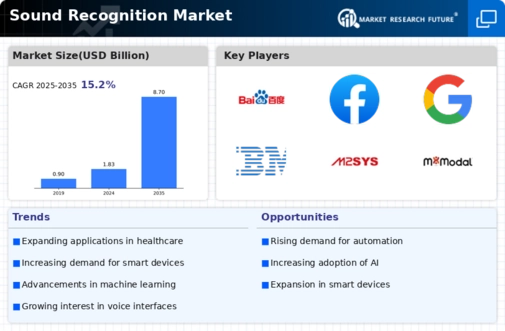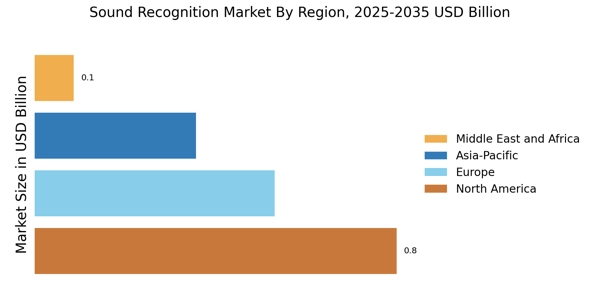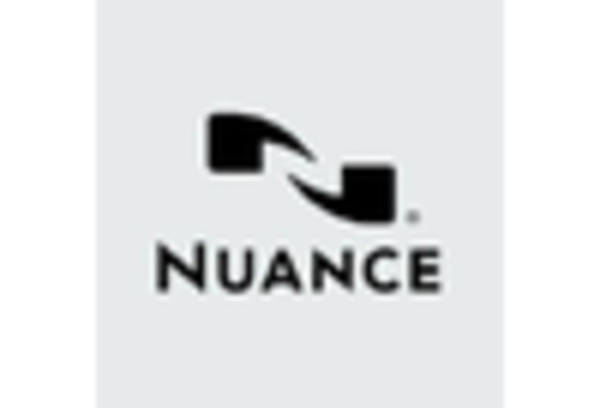Leading market players are making substantial investments in research and development to broaden their product ranges, fostering the growth of the Sound Recognition industry. These key players are engaging in diverse strategic initiatives, including launching innovative products, forming contractual agreements, executing mergers and acquisitions, increasing investments, and collaborating with other organizations to enhance their global presence. To survive and expand in response to market developments and flourish in a market environment that is becoming more and more competitive, the Sound Recognition industry must offer reasonable solutions.
Local manufacturing is a key business strategy utilized by manufacturers in the global sound recognition industry to support customers and increase market share. This approach aims to lower operational expenses by producing goods in close proximity to the target market. The sound recognition sector has recently provided some of the most important benefits to medicine.
Major players in the sound recognition market including Baidu, Inc. (China), BioTrust ID B.V. (Netherlands), and Castle Software, LLC. (U.S.),Facebook, Inc. (U.S.), Google, Inc. (U.S.), IBM (U.S.), LumenVox (U.S.), M2SYS Technology (U.S.), Microsoft Corporation (U.S.), MModal Inc. (U.S.), Nortex Holdings Inc. (U.S.), Nuance Communications, Inc. (U.S.), SemVox GmbH (Germany), Raytheon Technologies Corporation (U.S.).
Microsoft Corporation, a well-known technological corporation with its headquarters in Redmond, Washington. Microsoft is a pioneer in the creation, licensing, and support of several software products, hardware, and service offerings. The company's most notable product is the Microsoft Windows operating system, which is widely used in personal computers around the world. Microsoft's product portfolio also includes productivity software such as Microsoft Office Suite (including applications like Word, Excel, PowerPoint, and Outlook), cloud-based services like Microsoft Azure (a cloud computing platform), and collaboration tools like Microsoft Teams.
The company has diversified into hardware, producing devices like the Surface line of tablets and laptops, Xbox gaming consoles, and accessories. The Ambient Clinical Intelligence (ACI) solution, the Nuance Dragon Ambient Experience (DAX), was introduced in September 2021 by Microsoft and Nuance Communications. With the intention of increasing virtual consultations and enhancing both physician wellbeing and patient health outcomes, this ground-breaking technology will be integrated into Microsoft Teams.
Imagine Learning is a leading educational technology company that specializes in creating innovative digital learning programs for students. The company is renowned for its cutting-edge software solutions designed to enhance classroom learning experiences. Imagine Learning's educational platforms are tailored to help students develop essential skills in language, literacy, mathematics, and other subjects. Imagine Learning has partnered with Microsoft, leveraging the technology giant's expertise and resources to enhance its educational offerings further. By combining Imagine Learning's educational content with Microsoft's powerful software and cloud services, the collaboration aims to provide educators and students with comprehensive, interactive, and personalized learning experiences.
In April 2022, Imagine Learning announced a partnership with SoapBox Labs. Imagine Learning is a widely used educational solution for millions of children in the United States. SoapBox Labs, a voice recognition startup based in Dublin, enhances children's learning experiences through interactive play.

















Leave a Comment